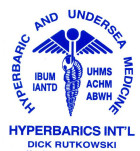The concept of isobaric oxygen is for therapy as well as improving cellular longevity for those with existing minor medical problems. As we get older (approximately 40), we begin to outlive the design specifications of the cells, tissues, and organs in our immune system. This change could happen earlier or later in life, depending on the activity level of our lifestyle. Age itself becomes a significant risk factor in inhibiting the repair mechanism of DNA, cells, and tissues. When a decrease occurs in the rate of DNA replication, the cells and tissues experience a delay in their normal function of being active and dividing. Surface oxygen can provide supplementary oxygen to the DNA and cells to help restore cellular/tissue resources, prevent the aging and death of cells, and prolong a person’s overall longevity. The purpose of the “Surface Oxygen Cellular Physiology” program is to help prevent the onset of certain medical conditions and to treat chronic persistent ambulatory medical conditions. Since oxygen itself is a natural antibiotic, it will prevent the development of harmful bacteria, diseases, infections, and microorganisms; reduce the symptoms of allergies and arthritis; and prevent the occurrence of other known or unknown medical conditions. In addition, oxygen does all of this safely. Oxygen does not interfere with the replication of DNA/cells like most prescription antibiotics, and there is no risk of transdermal chemical reactions.
Click here to learn more about our Surface Oxygen Cellular Physiology Course today.
















